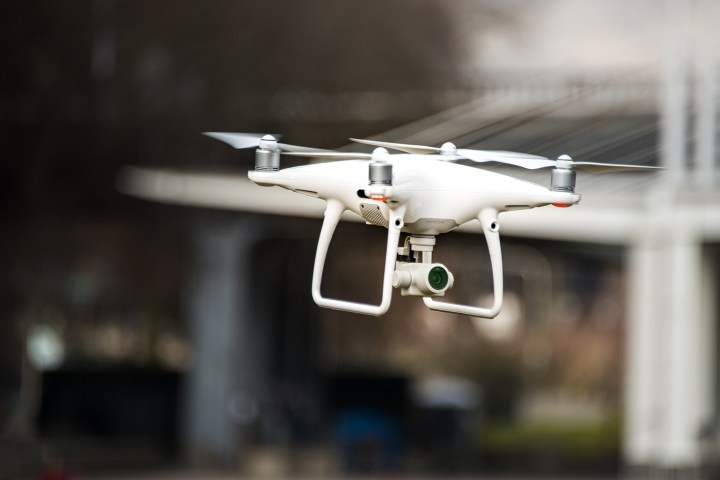
If that sounds like you, stop worrying: We’ll break down the latest drone regulations to make things a whole lot easier. We still suggest you read the UAS (unmanned aircraft system) regulations to get the full picture, but here’s what you need to know if you have big drone plans and want to know what’s legal.
Note: These regulations apply to all unmanned aircraft under 55 pounds. Since drones are lightweight, this effectively applies to pretty much every drone available to consumers. However, it’s worth noting if you are planning on packing a large drone with camera equipment or packages, etc.
Recreational & non-commercial drone use
Know how serious you are: If you have experience flying model planes, you can follow the same regulations used for them to stay legal — an alternative the FAA actually suggests. If you want to dive deeper into drones as a hobby, then plan on getting a remote pilot certificate under the small-UAS rules instead. No, past UAS training will not count.
Register your craft: It doesn’t matter what you do with it, you should probably register your drone. The FAA has a website to make this easier.
If you’re outside, the rules apply: You can do whatever you want with those tiny drones that fly around inside your house. But if you take a drone outside, all the rules apply, even if it’s just on your own property.
Pilots must be at least 16 years old: No exceptions. We know this seems like the “just say I was the one flying it” rule, but the FAA/law enforcement is serious about drones. Don’t test them on this.
Always keep the drone within eyesight: Always. It’ll last longer this way, too.
Don’t go higher than 400 feet: This is just common sense for the average recreational drone, which won’t be able to handle higher elevations well anyway.
Call an airport if flying within five miles of one: You need to notify airports within a five-mile radius that you plan to fly a drone near them. And yes, sometimes they will say no. It’s often easier to just find a spot that’s not near one.
Stay away from people and emergencies: If you’re wondering where to fly your drone, remember this general guideline: stay away from people and problems. Parks, parking lots, forests, meadows — you can fly in lots of places, but you have to follow the following two rules. Don’t fly over or near people, especially gatherings of people (sport events, family picnics, and so on). Stay at least 25 feet away, as a general rule. And don’t fly near emergencies. For example, it may sound cool to get a look at that wildfire, but you’re probably getting in the way of relief efforts, and those updrafts can blast your drone apart in a heartbeat.
There are “No Drone Zones”: Drones aren’t allowed in some areas at all. As you may expect, they are typically military sites, as well as all of Washington D.C. If you’re near a government location or in a busy area, check for No Drone Zones.
You can use the official app: All right, we know this whole location thing is getting complicated, but fortunately there’s an app, B4UFLY, that adds it all up and shows you where it’s totally okay to fly. We highly suggest you download and use it. It also adds in a bunch of other, smaller restricted areas, like power stations, prisons, highways, and more.
Stay alert: Obviously, this means no drugs or alcohol while operating the drone. But we mean it in another sense, too. Some of the greatest areas for flying a drone are in the countryside and in open areas. But these places can be surprisingly active: Surveyors, crop-dusters, helicopter tours, practice runs by local law enforcement, park rangers, and many others may be flying low-level manned or unmanned aircraft. Watch out, and don’t get stupid.
Local laws may apply: A lot of drone regulation is currently left up to states and cities. Look into local laws as well.
Professional & commercial drone use
Hold the right certification: That means a remote pilot airman certificate for sUAS (or at least have someone nearby who has one). It also means passing any applicable TSA vetting. The certified pilot must conduct a pre-flight check before every flight. Many businesses choose to appoint someone as the drone specialist and give them the resources to meet these steps.
It’s also worth mentioning that this and all professional rules apply if you make money off your drone. It doesn’t have to be owned by a business. If you even use a drone photograph in your small-business marketing, the rule applies.
Altitude, proximity, and age rules are the same as recreational: Stay below 400 feet, no one under 16 can fly, always keep the drone in site, and stay at least 25 feet away from groups of people (unless you have made arrangements with them and have a waiver).
Don’t fly more than 100 mph: Can your drone hit that? Wow, that’s really impressive. But it’s also illegal, and not especially effective for business purposes, either.
Don’t fly at night: Twilight is fine, if you have anti-collision lighting, which most drones do.
Always ask permission: Many commercial drones need to fly above or around buildings and people to get the right shots. There is a way to do this. First, let people know your plans and ask permission from any applicable organizations (this is really easy if you stick with your own property or the site you are working on). Second, and especially for big projects, get a waiver from the FAA. This can take 3 months to process at minimum, so submit it early.






